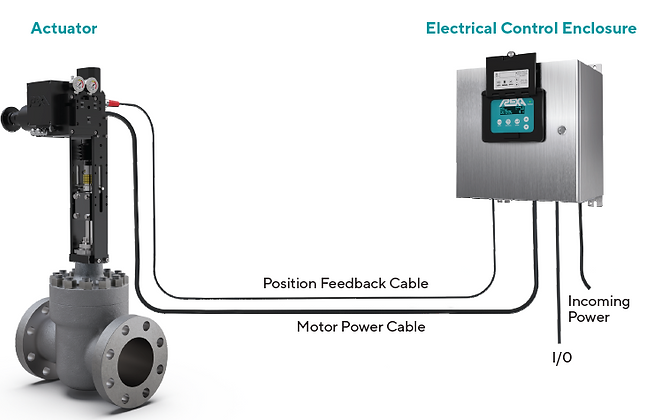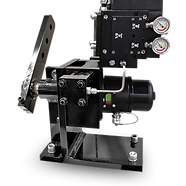
REXA delivers high-performance actuation, services, and consultancy enabling our customers to optimize their process performance and successfully manage safety, reliability, and environmental impact.
XPAC Series 3 Rotary Actuator
Torque
2,500-1,500,000 in-lbs
282-169,477 Nm
Rotation
90 degrees, 120 degrees, or 270 degrees
Features and benefits
-
Electraulic Power Module Motor & Pump System
-
Closed-Loop Hydraulics
-
No Routine Fluid Maintenance
-
Pressure Gauges To Monitor Output
-
100% Duty Cycle Motors
-
Low Power Consumption
-
User-Friendly Push Button Calibration
-
Rack & Pinion Cylinder Design
-
90 Degree Rotation
XPAC Series 3 Linear Actuator
Thrust
2000 - 275,000 lbf
8,896 - 1,332,260 N
Stroke
2-120 in
5-305 cm
Features and benefits
-
Electraulic Power Module Motor & Pump System
-
Closed-Loop Hydraulics
-
No Routine Fluid Maintenance
-
Pressure Gauges To Monitor Output
-
100% Duty Cycle Motors
-
Low Power Consumption
-
User-Friendly Push Button Calibration
XPAC Series 3 Damper Drives
Torque
2500-1,500,000 in-lbs
282-169,477 Nm
Rotation
90 degrees, 120 degrees, or 270 degrees
Features and benefits
-
Electraulic Power Module Motor & Pump System
-
Closed-Loop Hydraulics
-
No Routine Fluid Maintenance
-
Pressure Gauges To Monitor Output
-
100% Duty Cycle Motors
-
Low Power Consumption
-
User-Friendly Push Button Calibration
-
Rack & Pinion Cylinder Design
-
90 & 120 Degree Rotation

Electraulic™ Actuation is a brand of electro-hydraulic actuation unique to REXA. It combines the simplicity of electric operation, the power of hydraulics, the reliability of solid state electronics, and the flexibility of user-configured control. The foundation of our technology is the patented breakthrough in hydraulic circuitry called the Flow Matching Valve System. In conjunction with a bi-directional gear pump coupled to either a DC stepper or AC servo motor, this system is a highly efficient method of moving hydraulic fluid from one side of a double-acting cylinder to the other. Electraulic™ Actuation consists of two major components: the Actuator and the Electrical Control Enclosure. Each component plays a critical role in combining the benefits of major actuator types (pneumatic, electric, hydraulic) while eliminating the drawbacks of each technology.




